Mobile In-App Notifications: Effective Ways to Drive Engagement
The prediction that by 2023, 7.33 billion people worldwide will own a smartphone makes it increasingly essential for businesses to embrace mobile marketing. Mobile in-app Notifications are one of the widely used mobile marketing techniques employed by brands worldwide.
In-app Notifications are messages delivered to users when they are active within a mobile app. These are ideal for reaching users with the right content at the right time to engage them with your brand. These can deliver rich content like images, GIFs, videos, etc. These help ensure more meaningful and targeted user sessions.
Statistics say that brands using in-app notification witness a 30% increase in app downloads and an enormous four-fold increase in app retention. You can use these for onboarding new users, displaying special offers, highlighting new features, and much more.
Here are seven ways to drive user engagement through in-app notifications.
Contents
7 ways to drive user engagement through mobile in-app notifications
1. Simplify the onboarding process
Today’s technological advancements and human creativity have generated apps with complex features. This has rendered the onboarding process complicated. One way of driving user engagement through mobile in-app notifications is walking users through design changes, especially with that of the user interface.
You can begin by sending a note of gratitude to your users for downloading the app. After this, you can send personalized messages with simple information on how they can navigate across your app, paying attention to vital app features that will get them started immediately.
Such in-app notifications can help build a lasting customer relationship. Studies say that this can reduce app uninstalls by nearly 20–25% within the first 30 days by establishing an instant emotional bond with first-time users.
Further, you can send opt-in messages to first-time users to encourage them to complete registration, login, receive push notifications, or update their profiles. Make sure that you clearly state how useful your push notifications would be to them.
2. Initiate first-time conversions
New users often need to be gently coaxed into their first conversion event. You can incentivize it with in-app notification messages offering a first-time purchase discount, referral code, or promo offer. This works particularly well for apps related to food delivery, e-commerce, payment wallet, ride-hailing, and travel.
The aim is to quickly convert a new user into a transacting customer who becomes happy with a pleasant first-time user experience (FTUE). This would, in turn, go a long way in retaining them as your long-term customers.
3. Promote yourself
When a user is active on your app, you have an immense opportunity to promote yourself. You can pitch relevant discounts, offers, new cross-sell/upsell deals, time-sensitive flash sales, etc. Make smart recommendations based on the user’s purchase history, time zone, geolocation, search history, etc., to your users.
This can seamlessly improve user engagement, boost sales, and enhance the customer life-cycle. These in-app marketing campaigns work very well for apps related to food delivery, e-commerce, travel, online grocery, ticketing, media OTT, and telecom.
So, the aim of such promotional notification campaigns must be to personalize the complete end-to-end app usage experience. This can be achieved by comprehending your users’ personas, preferences, and behaviors.
4. Reward users
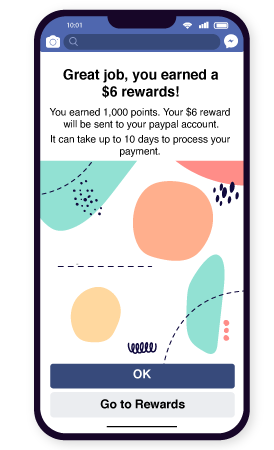
Rewarding users for their in-app activity is an excellent way of engaging your users through mobile in-app notifications. You can award them with in-game currency or promotion codes. This will motivate them to use your app further.
You can also send customized messages to congratulate them on each milestone they reach. For instance, if a user has used your healthy recipes app every day for a week, take advantage of the opportunity to reward them with a discount code for availing of your premium service.
Make sure that your in-app messaging incorporates value to your user and serves your brand’s objectives.
5. Draw attention to app features
Every user utilizes not all features in your app. So, run mobile in-app notifications to draw your users’ attention to new or underutilized app features. You can also use these for generating awareness about new content added, products included in the catalog, services introduced, etc.
The objective is to inform, educate, and empower your users with adequate, relevant information to enable them to use your app platform, increase average session lengths, raise content intake, and usher in monetization opportunities. Such campaigns would work for fitness apps, e-commerce, media OTT, music, travel, banking, gaming, productivity, etc.
6. Make recommendations
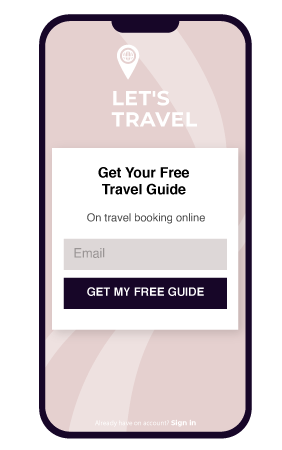
Making relevant recommendations to specific user segments can simplify your users’ decision-making process by giving them meaningful options to make use of. You can segment users based on their geolocation, transaction history, browsing history, etc.
For instance, a travel app can send in-app notifications suggesting a more affordable flight at a more favorable time for a user who frequently reserves tickets to a specific destination using your services. Likewise, a food app can suggest dishes that are often purchased together, and a content app more blogs from a particular author.
Ensure that you make these recommendations based on your users’ real-time and historical in-app activity and behavior. Also, this will encourage a specific user segment to make more purchases or consume more content. These mobile in-app notifications are great for apps related to travel, e-commerce, food delivery, media OTT, payment wallet, news, etc.
7. Announce price change in wish-list items
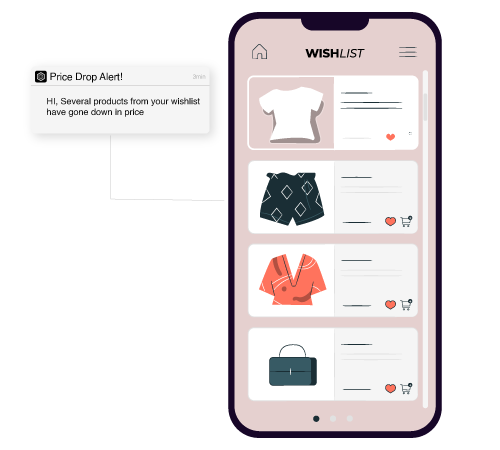
When the price of a product in your user’s wish-list comes down, notify him or her about the same. Since they are already interested in the product, your notification of its reduced price is sure to coax them into buying it. So, automate your app to show reduced price notifications of the items in your user’s wish list as soon as the price falls.
Notice how well-crafted the message is in the above given example. There are dual pushes in it. One is the price reduction by 20%, and the other is the limited stock announcement.
8 Best Practices to be followed for In-App Messaging
In-app notifications are certainly powerful tools aiding in your digital marketing. If done correctly, these can streamline your user experience and customer services and boost brand loyalty. Here are eight best practices to help you reap the benefits of in-app messaging.
1. Invest in the best in-app messaging tool
You must choose the best tool for your in-app messaging. Because, the ideal tool will come with easy integration features, powerful analytics, user segmentation, multiple platform support, scheduling, and customized triggering. It should also offer adequate support to help you design notifications and run campaigns successfully.
2. Be consistent with your brand.
Your in-app messaging copy should be consistent with your brand. So, you Pay attention to the colors, fonts, design, and other elements to ensure a unified customer experience. Because this will enhance your in-app messages and ensure strong branding. Further, make sure that your message is straightforward and short. Users like that.
3. A/B test your mobile in-app notifications
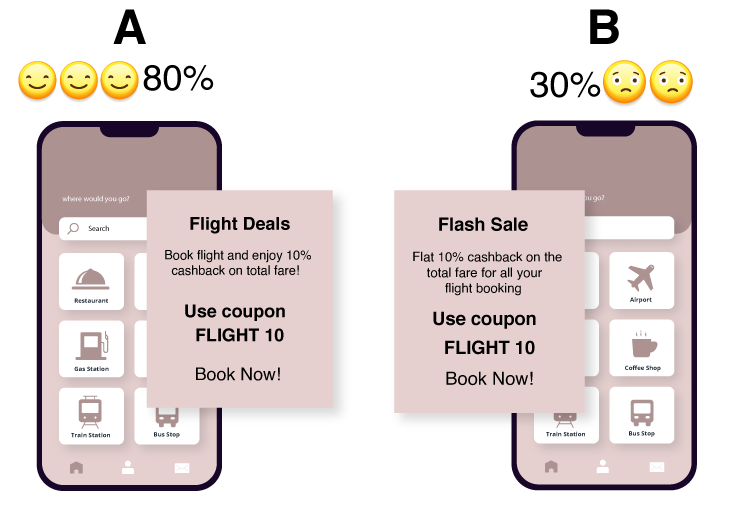
A/B testing your in-app messages with smaller audience groups before sending them to your entire audience is recommended. So, it lets you be a winner and helps you learn the tactics of successful messaging. So, over time, you get to know what works for your audience and, you should test different messaging copies and formats. The variables can include personalization, wording, images, emojis/GIFs, humor, and timing.
4. Personalization
Extensively personalizing your in-app messages can help a lot. Apart from addressing the user by his/her first name, consider his/her individual needs by looking into their previous in-app activity or info such as their location. Also, this will impress your audience, stimulate increase engagement, and increase app retention. Studies show that open rates go up by almost 10%, even with basic push notification personalization.
5. Focus on the timing
You also need to find the best time to send in-app messages to your users. For this, you need to go through your analytics. For instance, you may get to know that your users immediately engage with your messages after opening your app or performing a particular in-app action.
6. Work on your CTA
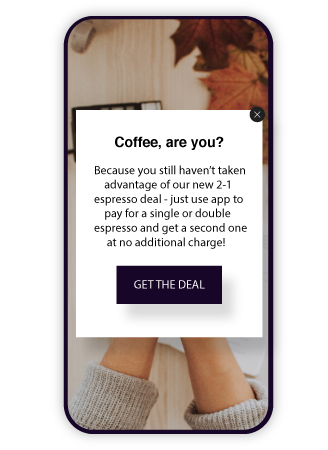
One of the most vital components of your mobile in-app notifications is the CTA (call to action). When writing your message copy, use the best CTA for your desired action. Some ideas include “Try for free,” “Signup,” “Get Started,” “Subscribe,” “Join us,” “Learn more,” “Give a Try,” “Send me specials now!”, “Claim your free trial,” etc. Find the language that entices your audience to click through.
7. Use rich media
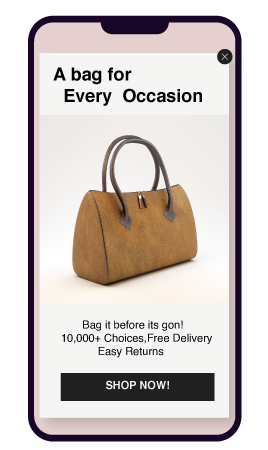
Using rich media will beautify your message and significantly boost your campaign’s performance. A study found that 57% of consumers are more confident in their buying decisions when watching videos. So, do include videos, GIFs, live streams, podcasts, infographics, topical webinars, or content narration audios- whichever would suit your campaign the best.
8. Be in conjunction with other channels
Do not solely rely on in-app messaging alone. Combine it with other communication channels like email marketing, push notifications, etc., for best results. Instead, it would help if you used in-app messages, push notifications, and email marketing to achieve your goals. Reaching users via in-app messaging is restricted to those timings alone when your users open your app. By employing other channels, too, you can reach users more often.
Rounding it all up, mobile in-app notifications are ideal for reaching users with the right content at the right time to engage them with your brand. Also, you can onboard users, walk them through your app’s features, reward them for their in-app activities, announce deals and discounts, and get more done through in-app messaging. You need to follow our best practices while doing so to reap the benefits of in-app messaging.

























 Email
Email SMS
SMS Whatsapp
Whatsapp Web Push
Web Push App Push
App Push Popups
Popups Channel A/B Testing
Channel A/B Testing  Control groups Analysis
Control groups Analysis Frequency Capping
Frequency Capping Funnel Analysis
Funnel Analysis Cohort Analysis
Cohort Analysis RFM Analysis
RFM Analysis Signup Forms
Signup Forms Surveys
Surveys NPS
NPS Landing pages personalization
Landing pages personalization  Website A/B Testing
Website A/B Testing  PWA/TWA
PWA/TWA Heatmaps
Heatmaps Session Recording
Session Recording Wix
Wix Shopify
Shopify Magento
Magento Woocommerce
Woocommerce eCommerce D2C
eCommerce D2C  Mutual Funds
Mutual Funds Insurance
Insurance Lending
Lending  Recipes
Recipes  Product Updates
Product Updates App Marketplace
App Marketplace Academy
Academy

